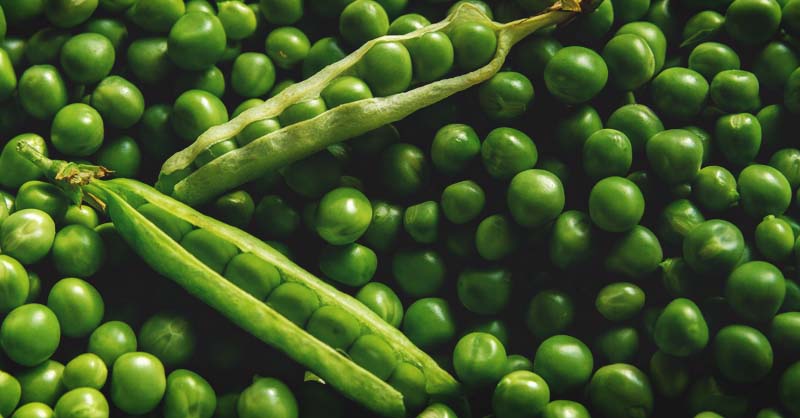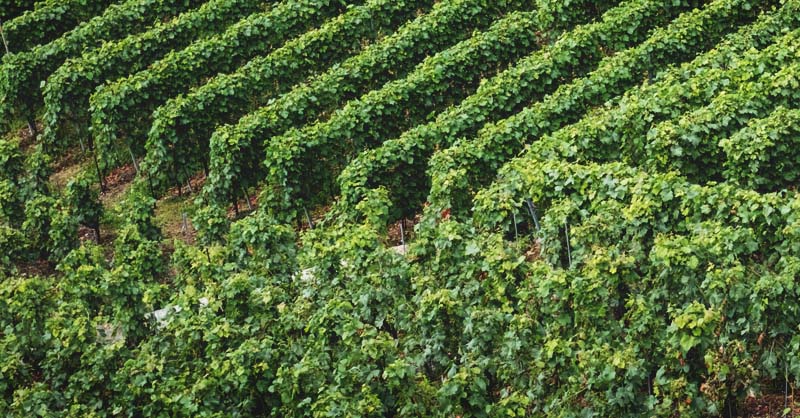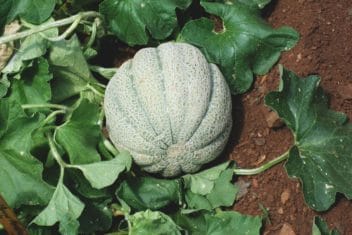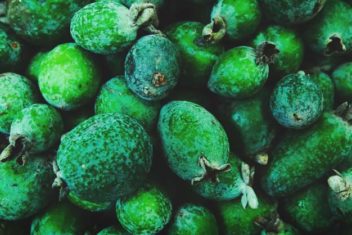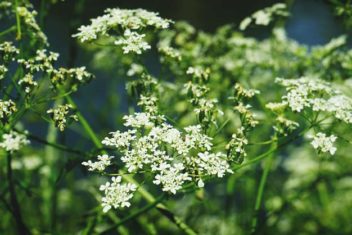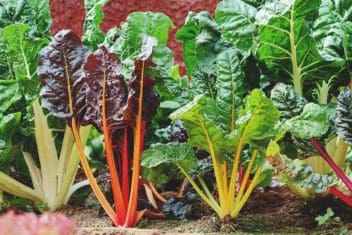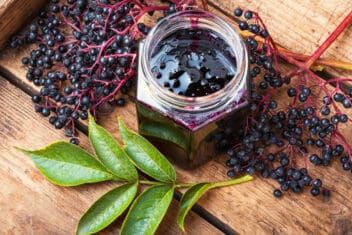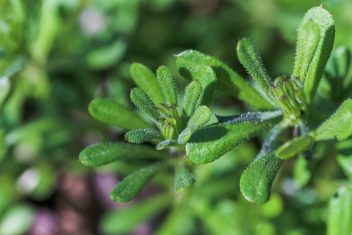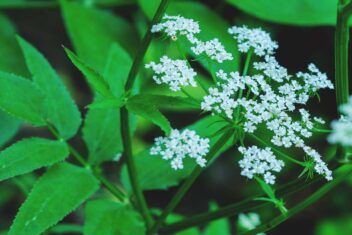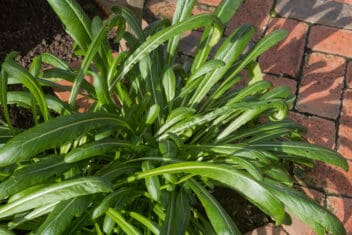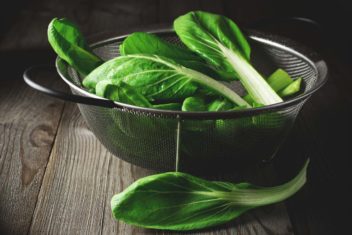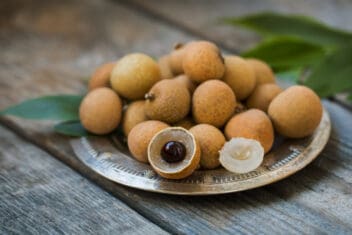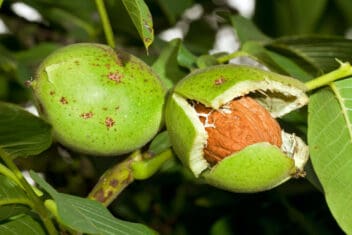Growing peas is the absolute bomb! Why might you ask? Because when you can put green peas in the ground, that usually means that growing season is beginning!
Ok, green peas are awesome for more than just that, of course. They’re so easy to grow that they make a good project for kids, and one plant gives you a good-sized harvest.
So how do you grow peas, and what can you do with them once you have grown them? I’m going to explain everything you need to know.
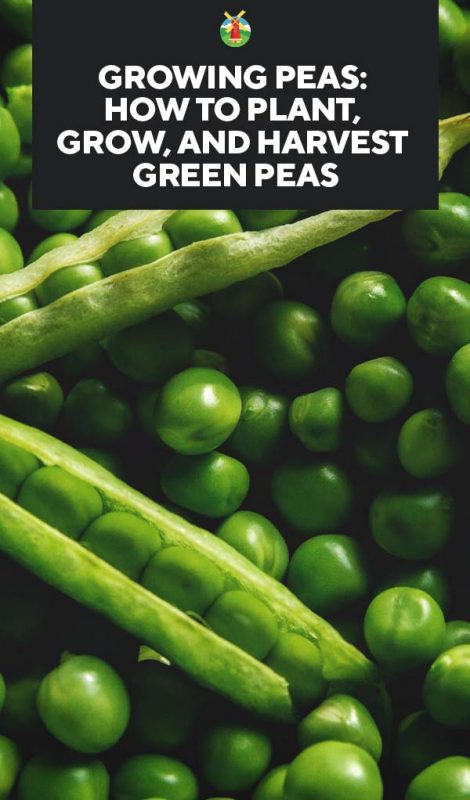
Peas Plant Info
- Botanical Name: (Lathyrus oleraceus and Pisum sativum)
- USDA Hardiness Zones: 3, 4, 5, 6, 7, 8, 9, 10, 11
- Soil: Loam, PH between 5.5 to 7.0, well-drained, rich in humus
- Sun Exposure: Full sun, part sun
- Planting: Plant directly outdoors 4 to 6 weeks before the last frost date, when soil temperatures reach 45°F
- Spacing: 2 to 4 inches between plants and 18 to 48 inches between rows
- Depth: 1-inch seed depth
- Best Companions: Beans, carrots, celery, corn, cucumber, eggplant, pepper, radish, spinach, tomato, turnip
- Worst Companions: Onion, garlic, leek, potato, shallot
- Watering: Water sparsely during the plant growth period, heavily after blooms form
- Fertilizing: Side dress with compost or low nitrogen fertilizer when vines are 6 inches tall
- Common Problems: Aphanomyces root rot, ascochyta disease, brown spot, downy mildew, fusarium root rot, gray mold, powdery mildew, Rhizoctonia seedling blight, septoria blotch, bacterial blight, streak, enation mosaic, aphids, leafminers, Mexican bean beetle, thrips, root-knot nematode, spider mites
- Harvest: When the pods are plump, bright green, and round, 60 to 70 days after planting
Green Peas Varieties
There are two categories of green peas, Pisum sativum, for your garden. These can be further divided into early or main season peas. The two categories are:
English Peas
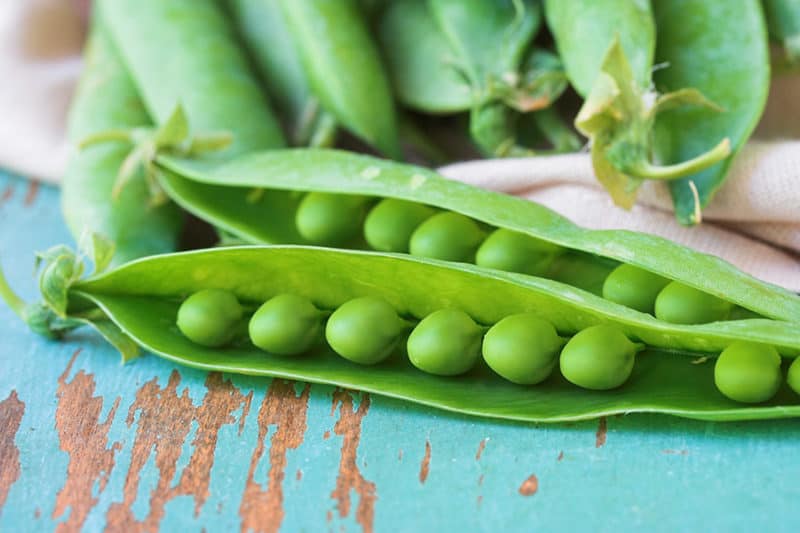
English peas have a sweet flavor and are what you purchase at the grocery store in a can. The pods are not edible, but the peas are delicious. They’re sometimes sold as garden or shelling peas.
Look for early types like Daybreak and Spring. Main season options include Sparkle, Little Marvel, Green Arrow, and Wando.
Sugar Peas
Sugar peas include snap peas and snow peas.
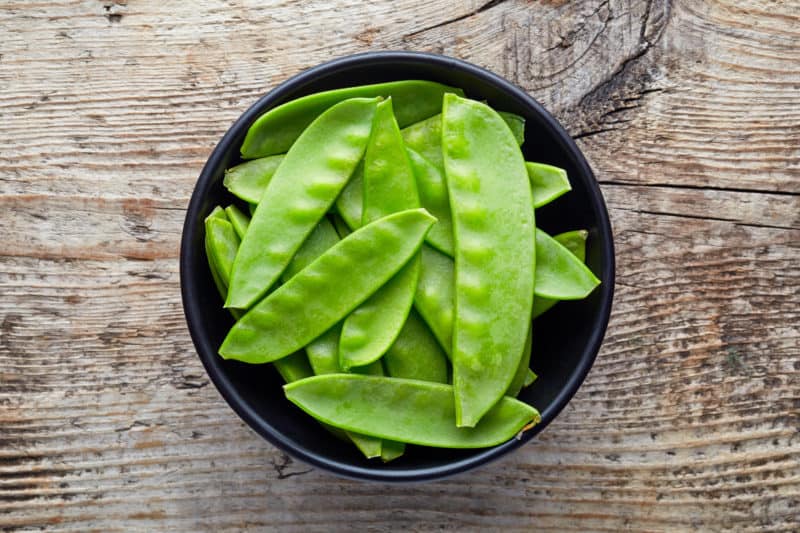
Snow peas are often used in some types of Asian cuisine. They have both edible peas and pods. The pods are flat which makes them easy to recognize. A lot of people like to snack on snow peas fresh.
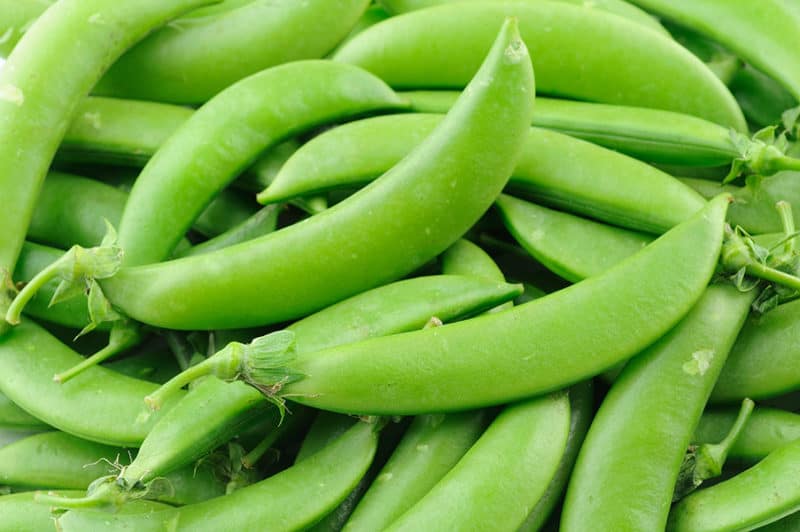
Snap peas are another type of pea that some people use as a snack and in a stir-fry. Both the pods and peas are edible. The main difference is that the peas in snap peas are larger than those in snow peas.
Snowbird, Dwarf Gray Sugar, and Snowflake are all excellent varieties worth checking out for your growing peas adventures.
How to Plant Green Peas
Growing peas is simple. The most important thing is to nail the timing for planting. Peas can grow in any USDA Zone from 3-11 with full or partial sunshine.
They need a loamy, humus-rich soil with a pH of 5.5-7.0.
Prepare the Beds
When growing peas, start your garden beds in the fall. This will give you time to till up the ground, apply compost, and mulch.
If you didn’t start your beds in the fall, that’s okay. Just till the ground as early as you can and work compost into the soil.
You’ll also need to decide if you want to plant your peas in a regular garden bed or a raised bed. If your soil doesn’t drain well, then it might be better to plant your peas in raised beds.
Once you’ve made all of these decisions and preparations, you’re ready to move on with growing peas.
Timing is Everything
Timing is the most critical aspect when growing peas. Peas do best in cold and moist weather. If you wait too long to plant, the heat will get them and kill your harvest.
If you plant when the soil is too moist, or the ground isn’t warm enough, then your harvest will never start.
Check a planting schedule to know when the best time is to plant in your zone. You also need to check the moisture in your area. Peas need moisture, so you want the soil to be wet but not waterlogged.
If the ground is too wet when planting, and it stays moist for days, it will damage your seeds.
Also, if you see snow in the forecast, don’t panic. Plant the peas because a light covering of snow won’t hurt new seedlings.
However, if you see temperatures in the forecast where it’s going to stay down in the teens for days on end, then know that you will probably have to replant.
The ideal temperature for peas is when the soil is above 45°F but below 70°F.
As you can see, there are a lot of factors to take into consideration when growing peas. Just judge it the best you can. In the worst-case scenario, you’ll have to replant.
Plant Your Seeds
Once you feel confident in the timing, sow your seeds. Each seed needs to be planted 1.5 inches deep and an inch apart from the next seed. You can plant your peas in single or double rows.
If you plant your seeds in a single row, then each row needs to be anywhere from 18 to 24 inches apart. The double rows need to be about eight to ten inches apart.
When the seeds have proper spacing and are in the ground, you’re ready to move onto learning how to care for them properly.
How to Care for Peas
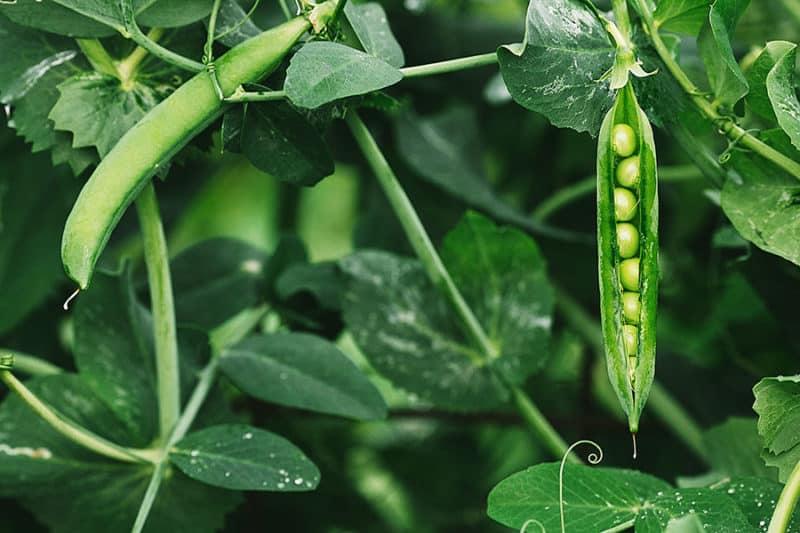
Peas require little care. If you follow a few basic rules, then your harvest should do just fine. Here is what you need to know:
Water Sparingly
You don’t need to water growing peas too often. Depending on where you live, the weather will probably take care of most of the watering for you because of the time of year that you’re planting. Typically, spring weather is rainy and cool.
However, if the peas begin to wilt, then you’ll know to water them more often. Go by the looks of your peas to see if they need additional water or not.
Don’t Fertilize Much
Peas don’t require much fertilizer. You can add some sparingly if you think your plants appear to be in need of nutrients.
Be sure to use a low-nitrogen fertilizer, because if you add too much nitrogen to the soil, you can damage your crop.
Don’t Hoe Your Garden
A lot of times, we’ll see weeds coming through in our crops and think that we need to begin pulling them or hoeing our garden.
In this case, don’t do that. Peas’ roots are shallow, and you can easily damage them if you hoe your garden too rough. Leave growing peas alone.
Rotate Crops and Mulch
Peas can attract diseases that form in the soil. With this in mind, it is a good idea to rotate your pea crop ever two years.
Also, it’s a good idea to mulch around your peas. This will help to keep weeds down, the soil cooler, and moisture in.
Common Problems with Peas
Every plant has its problems. Peas are no different. Here is what you need to be aware of when growing peas:
Aphids
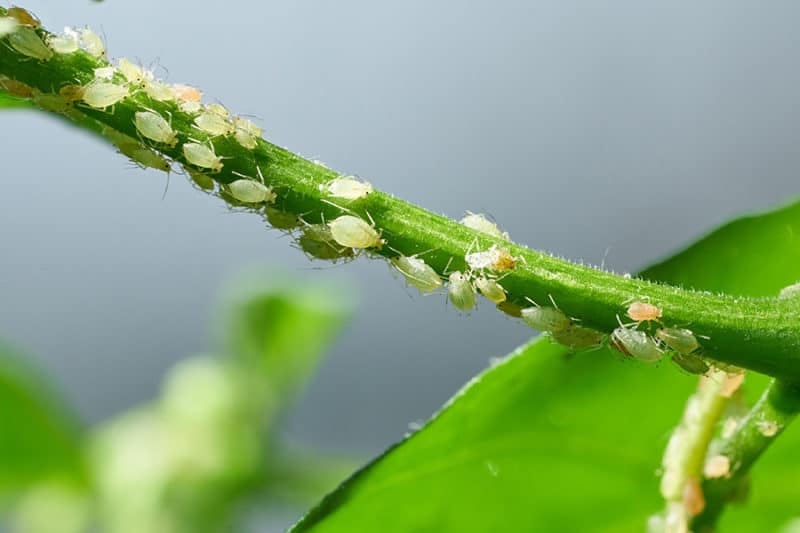
Aphids are a threat to many plants because they seem to show up in almost every garden. They are tiny bugs that cause problems with your plants, but also leave a residue that draws even more pests to your garden.
Also, you’ll know that you have aphids on your plants’ leaves become discolored or misshapen. You will see the sticky residue on your plants as well.
If you have aphids, try spraying your plants to dislodge the pests from the leaves. You can also try dusting your plants with flour.
Finally, try using an insecticidal soap or neem oil to rid yourself of the aphids problem
Mexican Bean Beetles
Mexican bean beetles are little bugs that look similar to ladybugs. They do similar damage to Japanese beetles.
They eat your plants and leave only a skeletal remain of them behind.
There are few ways to rid yourself of Mexican bean beetles. You can try insecticides or handpick the beetles off of your plants when you see them.
A personal recommendation (if you have the room and patience) is to consider getting guinea fowl or chickens. They’re productive and will eat these pests.
Groundhogs
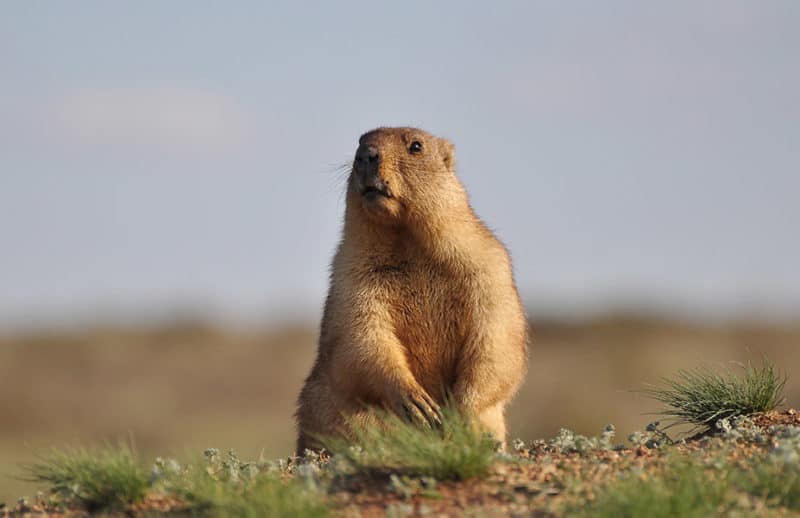
Some people call them woodchucks, I call them groundhogs. Whatever you call them, these little critters can destroy your pea harvest. If you are unfamiliar with groundhogs, they look like overgrown squirrels. They weigh around ten pounds and are about three feet long.
Unfortunately, these critters are also binge eaters. When you have one, they can scope out your garden and destroy it in no time.
You can begin to protect your garden by sprinkling blood meal and ground black pepper around the edge of your garden.
Then you can also try putting a fence around your garden too. Try to locate the hole of the groundhog and clog it to encourage them to move on.
Finally, if nothing else works, use a humane trap and relocate the animal yourself.
Fusarium Wilt
This is a fungal disease that begins in the soil. It attacks the plant’s roots and then makes its way up the plant interfering with water distribution throughout the plant.
From this, your plants will begin to wilt.
You can attempt to treat this disease with fungicides. You should also cut the dead from the plant to stop the spreading.
Also, check your soil. If your soil is high in nitrogen, it’s making the plants more susceptible. You should try to balance your soil and also stop fertilizing so much in the event this disease has developed.
Companions for Peas Plant
Most vegetables have plants that they grow better around, and they also have a few that should not be planted around. Peas are no exception. The best companion plants to plant with peas are:
- Beans
- Carrots
- Corn
- Cucumbers
- Eggplant
- Lettuce
- Melons
- Parsnips
- Potatoes
- Radishes
- Spinach
- Turnips
The plants that peas should stay away from are:
- Onions
- Garlic
How to Harvest and Store Your Peas
Harvesting peas is a simple process. You need to pick your peas as frequently as possible as they mature. The more you pick, usually, the more your plants will produce.
Then be sure that you don’t try to pick peas like you do beans. Pea pods are a little sturdier than beans. You’ll have to use one of your hands to pull the pod from the plant, while the other hand secures the plant.
If you pick with one hand, you run the risk of pulling the plant out of the ground.
Once you pick your harvest, you need to know how to preserve it.
Well, you are in luck. There are different options for preserving your harvest:
Store in the Fridge
When you pick your harvest, you don’t have to store your peas for long-term storage. You can toss them in the fridge, and they’ll stay good for five to seven days.
Freeze
Peas can also be frozen. You can freeze them in their pods (if you planted a variety where you would eat the pods.)
But if not, then you’ll want to shell them before freezing. It is usually a good idea to clean and blanch your peas before freezing, too. That way it’s less work when you thaw them and are ready to cook.
Dry
Some people like to use peas in soups over the winter. For this reason, they choose to dry their peas. There are different methods for each, so be sure to follow the method for the type of pea you have grown.
Can Them
When I’m growing peas, it’s to can them. Canning peas isn’t an easy task because you have to shell and clean them prior to the actual canning process.
But I enjoy having them on my shelf for a side dish or soup for later in the year.
Recipes for Your Green Peas
Of course, you can just nibble on them raw, but there are lots of tasty ways to prepare peas.
Creamed Peas
I love creamed peas! I don’t think there is a side dish that compares. It is based on a delicious green vegetable.
Then you add a creamy cheese sauce that makes it warm and comforting. It is an excellent all-around dish.
Creamy Pea Salad
Are you looking for a delicious salad that is a little different from your typical salad? Then look no further than creamy pea salad.
The recipe calls for peas, onion, Mayonnaise, bacon, and two different kinds of cheese. This one sounds like a home run.
Crunchy Roasted Green Peas
When my children were younger, I depended upon recipes from Super Healthy Kids to get them to eat anything healthy.
So when I saw this recipe, I knew it was a must share. Whether you are looking for a delicious, healthy snack or you need something fun for your kids to eat, you’ll want to give this recipe a try.
Now, you have a lot of reliable information on growing peas. Hopefully, you’ll have a productive and exciting growing season.

